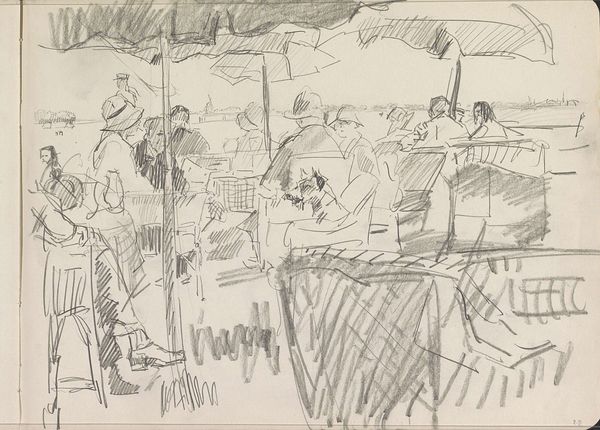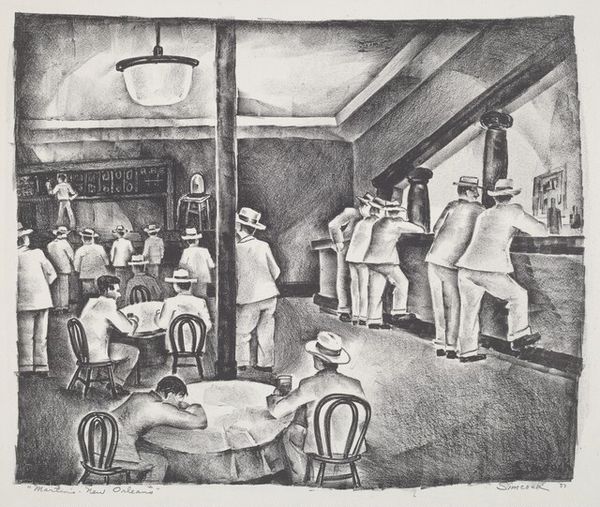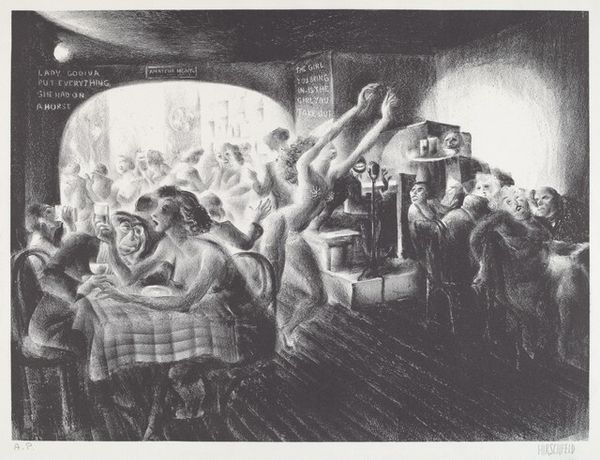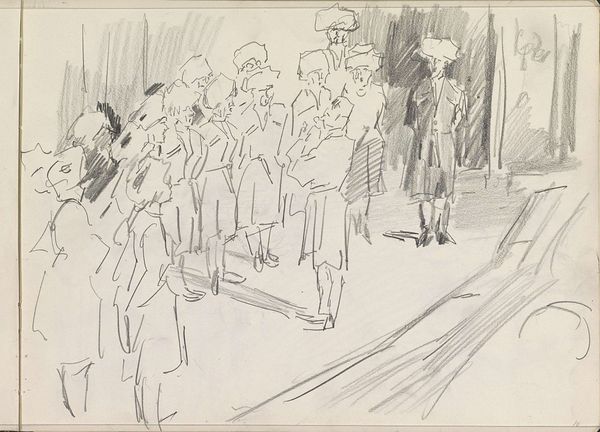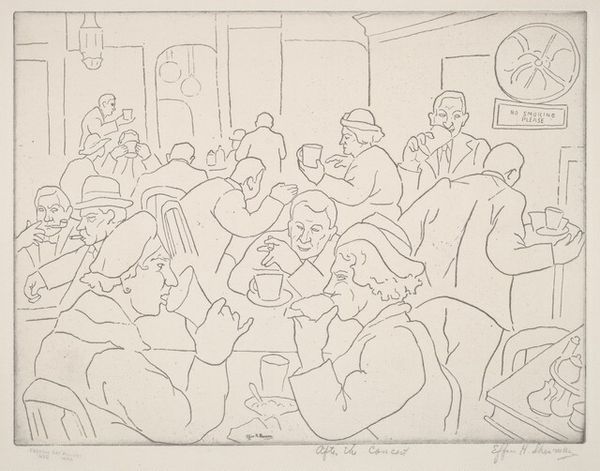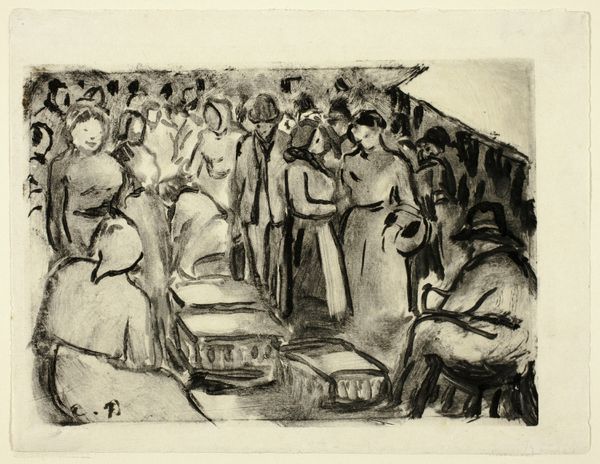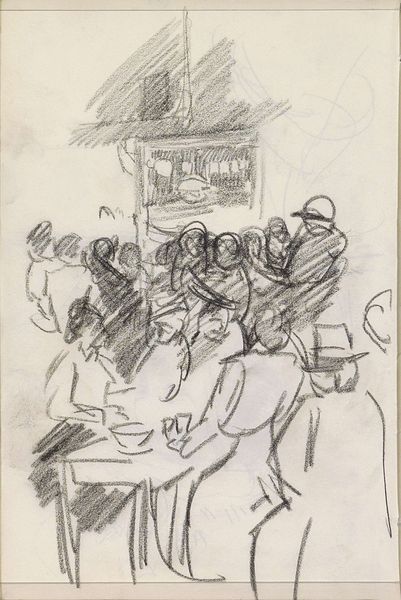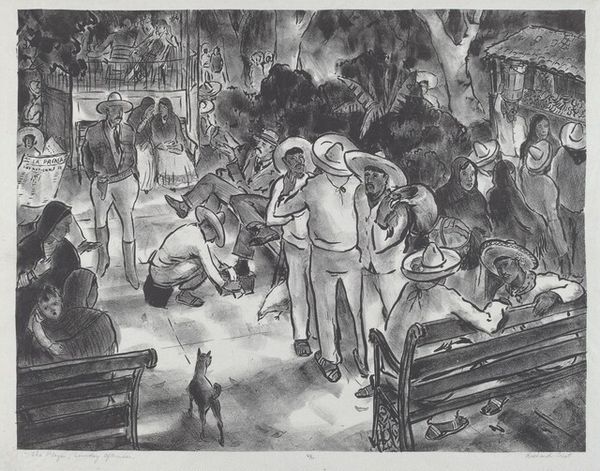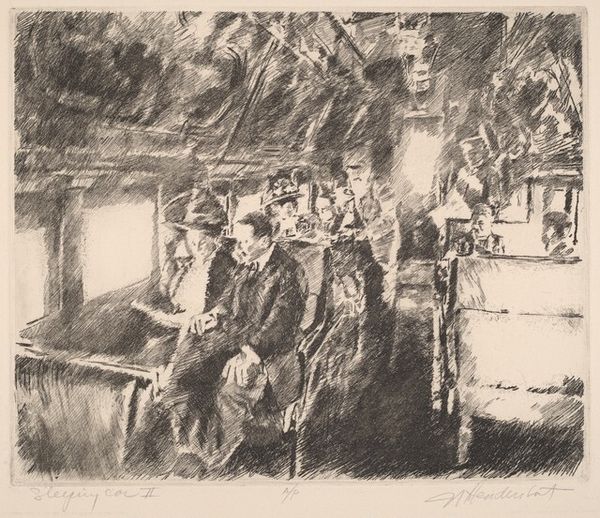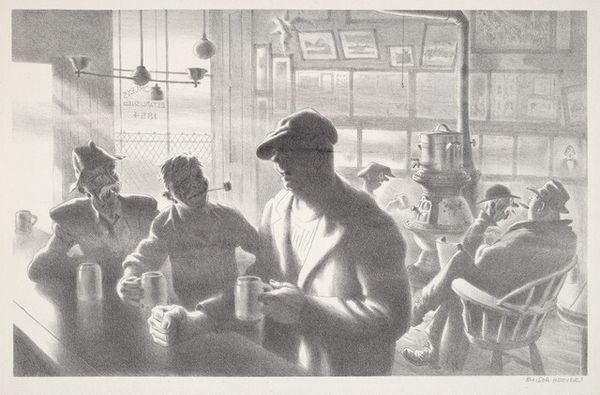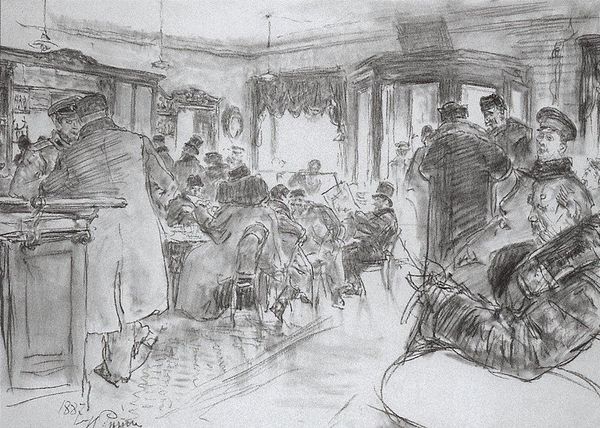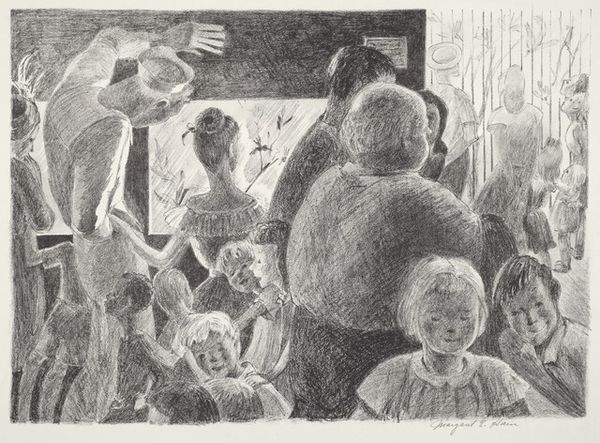
drawing, print, pencil, graphite
#
drawing
# print
#
figuration
#
pencil drawing
#
pencil
#
graphite
#
genre-painting
#
modernism
Dimensions: image: 215 x 320 mm sheet: 283 x 373 mm
Copyright: National Gallery of Art: CC0 1.0
Curator: Here we have Mildred Marion Coughlin’s "Trocadero," created around 1935, rendered in pencil and graphite. It’s a captivating print depicting a bustling social scene. Editor: My immediate impression is one of stifled energy. The close-knit figures, the hatching, it gives a sensation of restrained excitement or even anxiety bubbling beneath the surface. Curator: Absolutely. The drawing portrays a scene rife with the tensions of the era. Coughlin was working during the Depression, a period marked by stark social inequalities and the looming shadow of another war, reflected in the forced leisure and affectedness of this well-to-do crowd. Editor: I notice the artist uses layering to create areas of high density and shadow, especially around the figures. This gives them a remarkable sculptural quality, even though it's just graphite on paper. Look at the woman in the foreground: the folds of her dress, her intricate hairstyle - all masterfully rendered. Curator: And note how she places women, often adorned but passive, at the forefront. Are they reveling or suffocating in this atmosphere of enforced gaiety? How complicit are they? The subtle narratives within the groupings invite speculation about the power dynamics. It compels us to consider their roles, desires, and constraints within this historical moment. Editor: Formally, the composition leads the eye through a series of connected shapes. There’s a calculated rhythm, almost musical, between the light and dark areas, connecting individual moments across the drawing's entirety. The repetition of rounded forms—heads, shoulders, even the chandelier—provides cohesion. Curator: By utilizing print, Coughlin disseminates these critical observations to a potentially wider audience. This choice democratizes the consumption of this upper-class setting, challenging viewers to engage with the implications of social disparity. Editor: Yes, but that stark black-and-white medium lends it the air of detachment. We become observers—a fly on the wall in the "Trocadero." That distancing helps us look closely at those details we otherwise might miss in color and gloss. Curator: This analysis only scratches the surface, revealing some ways we can interpret social context embedded within visual forms. Editor: Indeed. Coughlin's print is a great reminder how the power of careful mark-making can unlock powerful historical, critical perspectives.
Comments
No comments
Be the first to comment and join the conversation on the ultimate creative platform.

